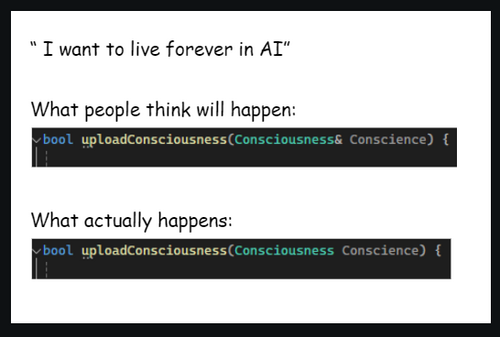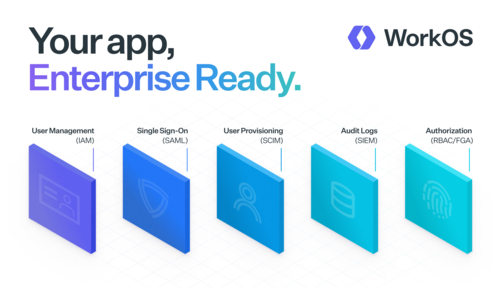🔗 View in your browser. | ✍️ Publish on FAUN | 🦄 Become a sponsor
DevOpsLinks
⭐ Patrons
WorkOS is a modern identity platform for B2B SaaS apps.
→ A complete user management solution along with SSO, Directory Sync (SCIM), and Fine-Grained Authorization (FGA).
→ Modular and easy-to-use APIs allow integrations to be completed in minutes instead of months.
→ High-quality documentation and seamless onboarding for your users eliminate unnecessary complexity for your engineers.
→ Free user management up to 1 million MAUs.
WorkOS powers some of the fastest growing companies like Perplexity, Vercel, Webflow, and more.
Start integrating today.
ℹ️ News, Updates & Announcements
Amazon ElastiCache's new support for Valkey 7.2 offers a compelling alternative to Redis OSS with better pricing—up to 33% cheaper for serverless setups and 20% for node-based clusters—while maintaining AWS-level security, availability, and scalability across regions and ensuring seamless API compatibility and zero-downtime migration options.
Mirantis Lens's update revolutionizes Kubernetes management with a redesigned UI for enhanced clarity, multitasking capabilities through tabbed views, real-time metrics, and streamlined AWS EKS integration, reinforcing Lens's status as the world's most popular Kubernetes IDE for its over one million users.
With 74% of organizations facing public cloud storage exposure often due to excessive permissions, and concerning statistics like 84% with critical access key risks, escalating cloud-native data dependence exposes sensitive data to increasing ransomware threats, exemplified by breaches such as MGM Resorts, underscoring the perilous landscape driven by lax access management in cloud services.
🐾 From FAUNers
In IT Service Management, while Jira Service Management (JSM) excels in flexible workflows and deep DevOps integration, ServiceNow shines with its ITIL-aligned automation and predictive analytics, making the choice between them hinge on whether your organization prioritizes agile adaptability or comprehensive, enterprise-level automation.
Borrowing from the canary in a coal mine analogy, canary deployment in software enables incremental updates by directing a small portion of user traffic to a new release, allowing for early issue detection and minimal risk, enhanced by automation in Kubernetes, which streamlines the process by dynamically adjusting traffic with tools like Istio, supporting continuous innovation with zero downtime and efficient resource use.
🔗 Stories, Tutorials & Articles
At ngrok, a solo engineer manages a data lake, embracing a unique approach where data engineering blends deeply with backend work, leveraging open-source tools like Airbyte, Flink, and dbt, alongside AWS and Clickhouse, facilitating a highly collaborative environment within a Go monorepo, tackling schema inconsistencies and efficient Protobuf streaming to ensure robust data handling and effective abuse prevention.
Testcontainers revolutionizes integration testing by using throwaway Docker containers to manage test environments with ease, offering automatic cleanup, preconfigured modules for diverse technologies like databases and message brokers, and enabling scalable cloud execution with Testcontainers Cloud, all while fitting seamlessly into your development workflow and enhancing test reliability and efficiency.
Terminal color configuration often leads to poor contrast, like the common "blue on black" issue, due to the inconsistent mapping of ANSI colors (16 primary colors) without standard hex values across terminal emulators; tweaking settings via terminal emulator configurations or shell scripts can mitigate these issues, but newer terminals supporting 24-bit colors offer better customization, and features like "minimum contrast" found in terminals like iTerm2 can address the common problem of illegible text by automatically adjusting colors for improved readability.
Intro to threads and async runtimes, discussing the differences between native and virtual threads. Native threads managed by the OS, while virtual threads are managed by a library or runtime. Runtimes provide scheduling for virtual threads, offering an abstraction for working with asynchronous tasks.
To create real-time alerts in Google Cloud Logging, one must leverage Log Entries and the robust Logging Query Language to filter specific events with precision, creating notifications through platforms like Slack or email whenever targeted actions, such as new VPC creations, occur.
A developer builds a comprehensive hand-holding guide to writing FUSE-based filesystems in Python, showcasing several implementations and unique examples like DNS, markdown compiling, and unzip filesystems, with the aim to simplify and motivate further exploration among Python learners and delivering talks at ChiPy and future tech conferences.
Docker significantly enhances DevOps workflows by allowing developers to work in standardized, isolated environments through local containers and remote tools, facilitating CI/CD practices, increasing collaboration and flexibility, and ensuring rapid, consistent delivery across diverse infrastructures.
IP spoofing is a significant threat in cloud environments, allowing attackers to bypass security measures that depend on IP verification by manipulating reverse proxy headers like X-Forwarded-For, with data showing 32% of organizations vulnerable, and mitigating this requires strategic header validation and careful network architecture adjustments.
The transfer of the Chagos Islands from Britain to Mauritius signals the end for the popular .io domain, highlighting how geopolitical events can unexpectedly disrupt the digital world; drawing from historical cases like the Soviet Union and Yugoslavia, Gareth Edwards sheds light on the intersection of international politics and internet infrastructure, warning tech founders about the risks tied to top-level domain choices.
With partnerships from Voltage Park, Dell, H5, and NVIDIA, a small team effectively set up and refined a massive cluster with 4,088 H100 GPUs for a 70B parameter model outperforming GPT-4o on reasoning tasks, by creating tools and scripts for robust host health checks, InfiniBand networking, and automating error recovery, all while detailing challenges like ECU failures, networking bottlenecks, and the complexities of maintaining a seamless distributed training environment.
⚙️ Tools, Apps & Software
A collection of learning resources for curious software engineers
The GitButler version control client, backed by Git, powered by Tauri/Rust/Svelte
Huly — All-in-One Project Management Platform (alternative to Linear, Jira, Slack, Notion, Motion)
🤔 Did you know?
Did you know that Airbnb uses Ruby on Rails as its core web framework? Ruby on Rails was chosen for its rapid prototyping capabilities, which helped Airbnb grow quickly in its early stages. Even though the platform has since scaled massively, Airbnb continues to use Rails for certain parts of its infrastructure due to its developer-friendly nature. However, as the company expanded, they also integrated other technologies like Java, Python, and React for performance optimization and scalability, allowing Airbnb to manage millions of bookings and users across the globe with ease.
😂 Meme of the week

🗣️ Quote of the week
The first 90% of the code accounts for the first 90% of the development time. The remaining 10% of the code accounts for the other 90% of the development time. ~ Tom Cargill

